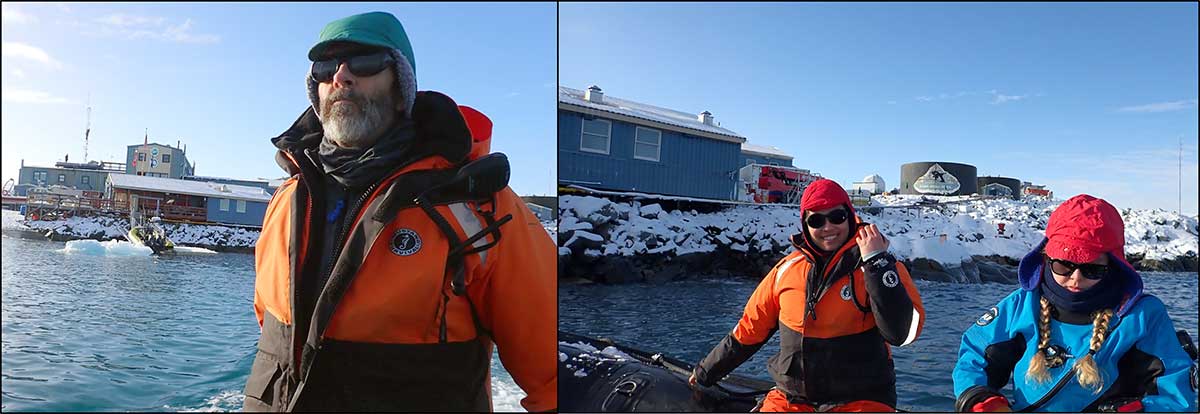
Team UAB in A was all smiles departing station in our trusty black rubber ship under the command of Captain Chuck. Thanks to high winds, it had been over a week since we had gotten out on and in the water. This sunny, near windless day Hannah and I would have a very pleasant dive conducting a video transect of a local site. Below is a snatch of what we swam amongst.
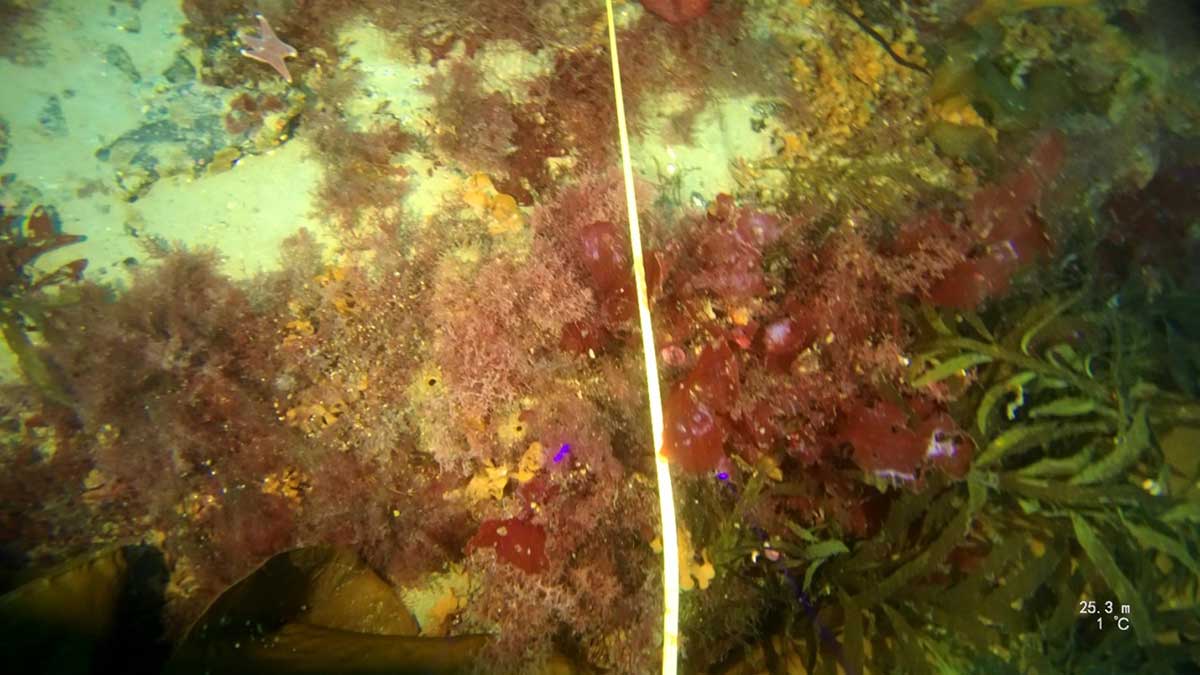
The next day was equally sunny and calm. No diving for us however as it was station refueling day. The Gould not only brought freshies as Hannah’s last post described, the ship also brought fuel for the station. Station refueling would entail running a very long hose from Gould’s fuel tank to the large round station fuel tanks. You can see the Palmer fuel tanks in the opening image and the fuel hose in the image below. As the hose snakes across the pier, it is resting on large sheets of thick cardboard to both protect the hose and make it easy to see any leaks. Many station members ‘walked the line’ on the alert for leaks throughout the process. Additional containment measures were in place – like the yellow boom encircling the ship at the waterline. I am happy to report there were no runs, no drips, no errors.
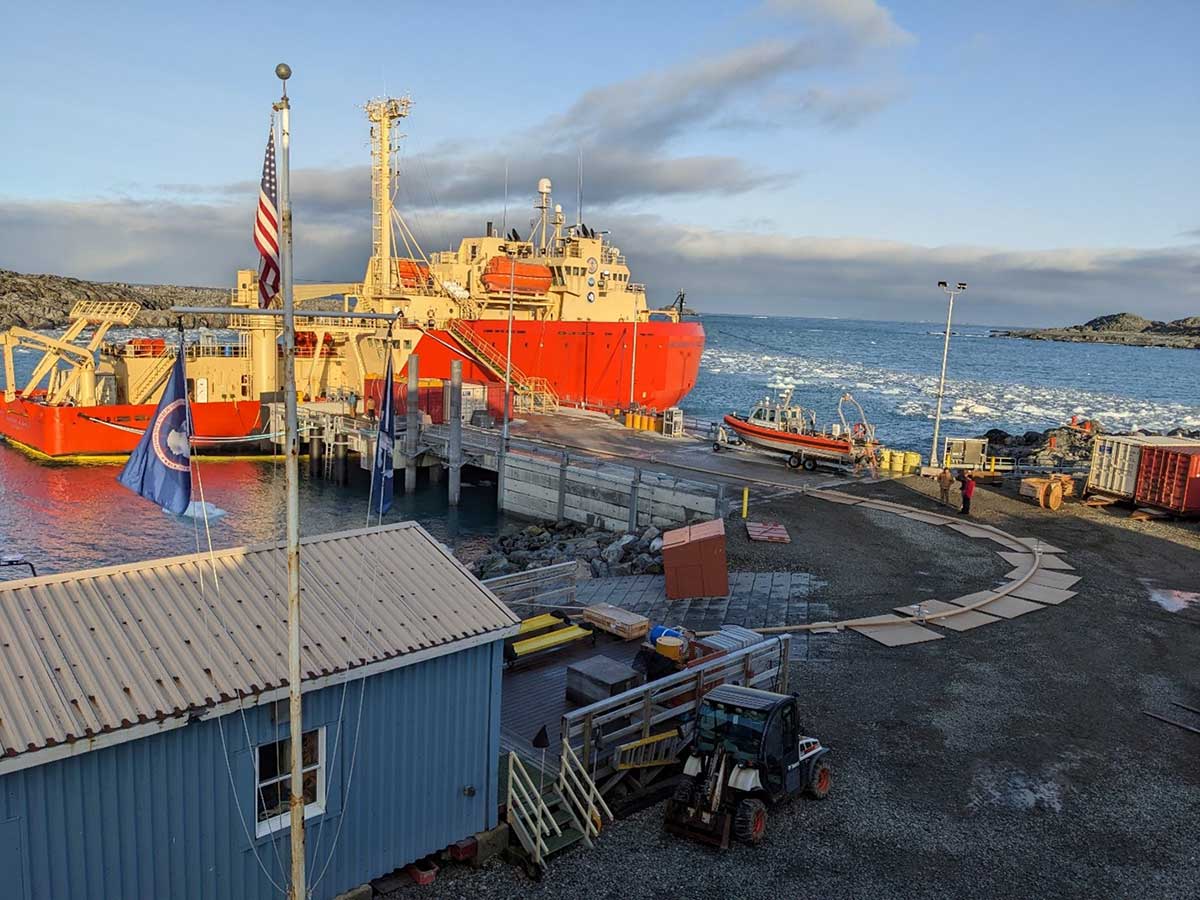
It has been months since I have been to a gas station, but I recall being very impatient sometimes with how long it took to fill my vehicle with a mere 20 gallons. Imagine a vehicle thirsting for 55,000 gallons! That is how much diesel the Gould pumped into the station’s tank. The flow rate was an impressive 10,000 gallons an hour. In case you are wondering, the station fuel capacity is 250,000 but usually less than 100,000 gallons are kept at any time. Station uses about 2000 gallons of fuel a week. Some of that fuel goes to making drinking water from seawater by a reverse-osmosis system. Massive Caterpillar generators produce 250 kw of power to run the station’s 120 volts consumption. Station heating is created by diesel-fueled boilers and waste heat from the generators. Of course, lots of person power is required to facilitate the diesel fuel powering the station.
The Gould’s return from Chile included not only freshies and fuel, but fresh faces – the winter crew - their arrival heralding the beginning of the end of Palmer’s summer. As true for Addie last month, the summer crew’s time to go had come. The seasonal crews overlapped for about a week before the winter crew formally took control of station operations. A few days later, another bittersweet departure ensued. But high winds that morning meant that departure was delayed for several hours before winds dropped and it was safe to untie the ship. Later that afternoon, we waved farewell to our friends gathered out on the decks and quietly wished them fair seas and following winds.
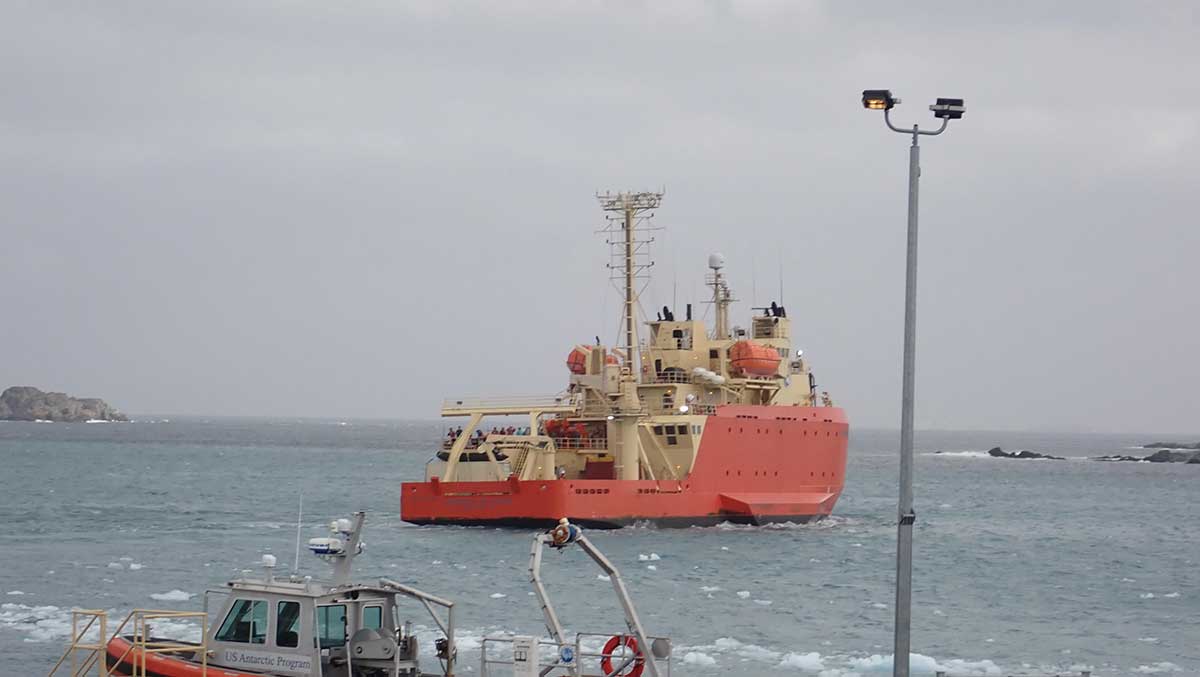
Another ship arrived the very next morning. Had these two ships passed in the night? Perhaps you viewed this behemoth ship, the M/V Keith, on the Palmer Station webcam (https://www.usap.gov/videoclipsandmaps/palwebcam.cfm?t=0). If not, here is a screen grab showing how the 520’ long vessel (the Gould is 230’) dwarfs Palmer’s pier.
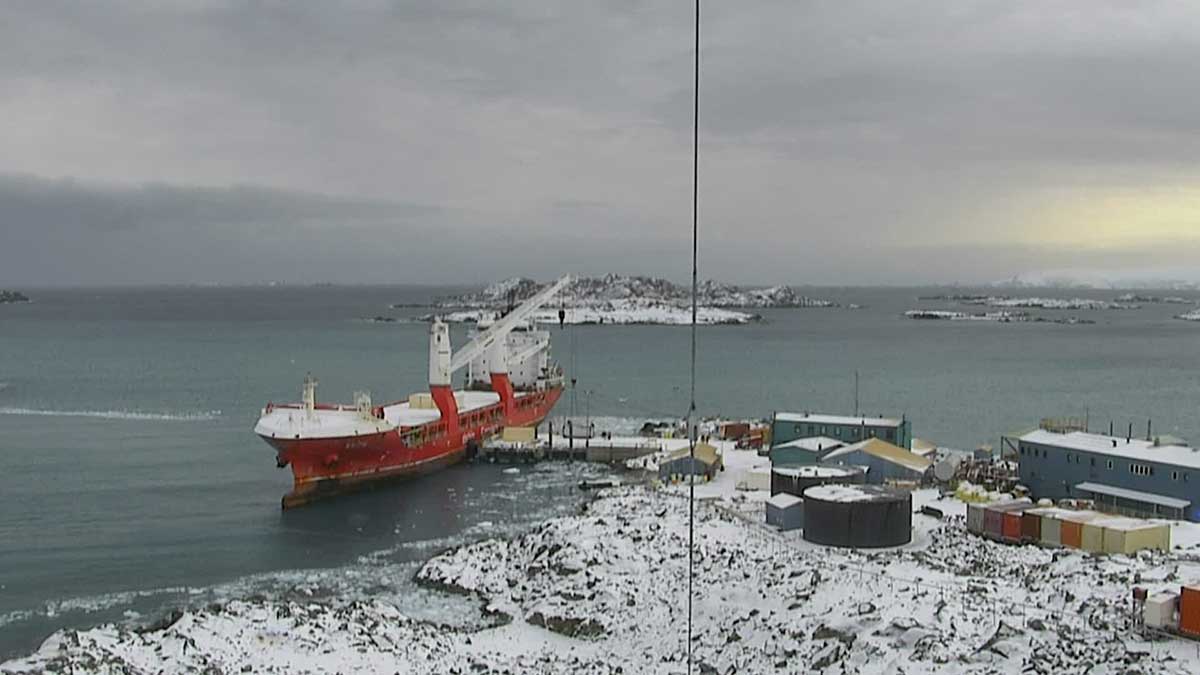
So why did such a big ship come to Palmer? The charter on the Gould expires next year and the USAP is investigating the feasibility of renting a ship to bring in personnel, cargo and fuel. As a proof of concept, the M/V Keith delivered two more of the winter crew, a container of frozen food (no freshies) and another 5000 gallons of fuel. The fuel came in a huge tank that was craned off the ship onto the pier. Once the hoses and the spill safety measures in place, the tank was pressurized to transfer the fuel up the hill to the station tank. Not as sunny a day but just as spill-free as the operation with the Gould.
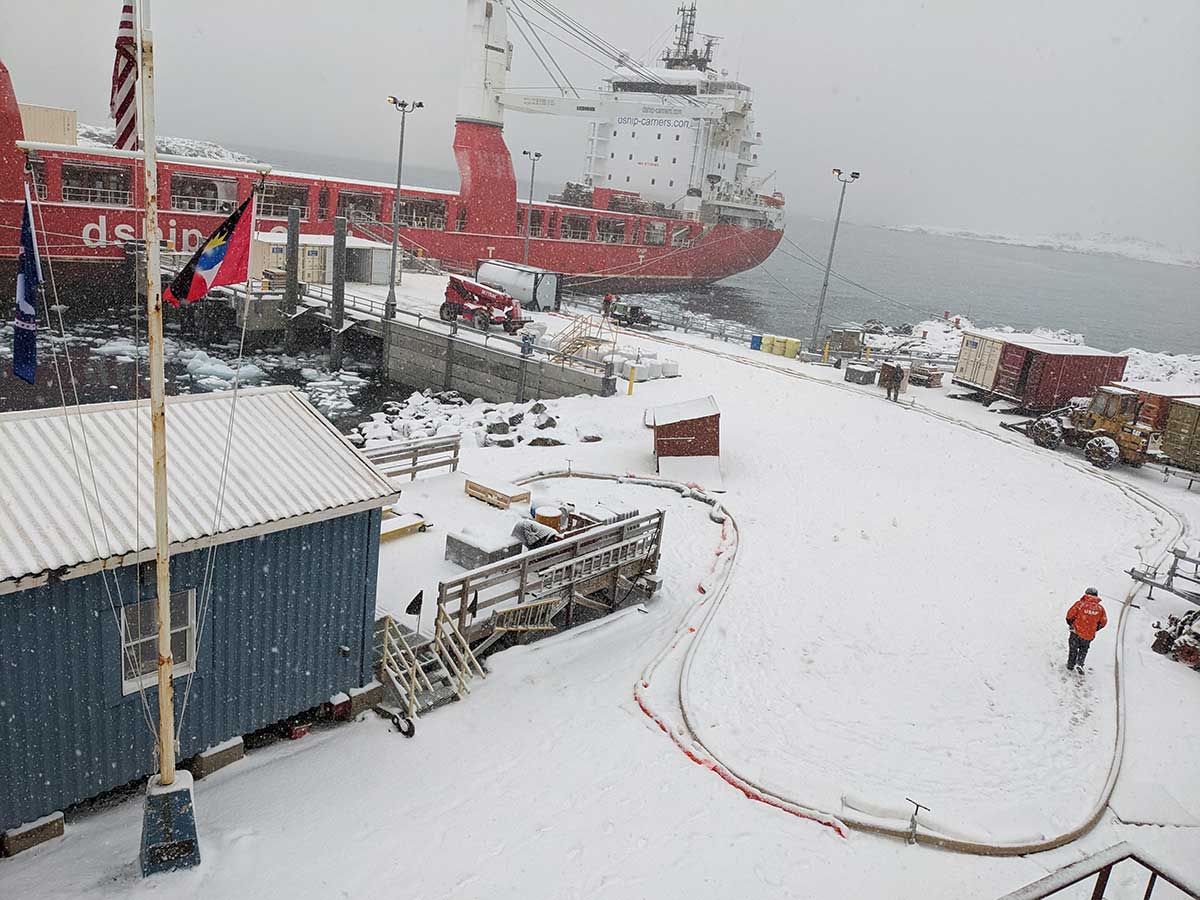
It would not have been possible to dock the Keith were it not for the new pier that was built last year. Chuck and I dove under it recently and it was like being under a pillared picnic pavilion, complete a relatively flat sandy bottom suitable for volleyball with a few scattered boulders at perimeter for seating. Quite boring biologically as not much had recolonized yet. I do miss the old pier, it was covered with life, but literally bursting at it rusting seams in spots with cascades of small rocks used to fill the structure pouring out like a waterfall. The old pier was over 50 years old and time to go.
That pier was built specifically for the first ship to support Palmer Station, the R/V Hero. My first couple trips to Antarctica were aboard that dear 125’ wooden hulled vessel. It was long ago replaced by a bigger ship and soon the Gould will be replaced with a rental like the Keith, though maybe not as big. The Hero has never sailed out of my heart though. Shortly after I arrived on station last December, my friend Lance Roth, presented me with the ship-in-a bottle replica of the Hero seen below. It took him two months during his winter in 2021 to meticulously craft this incredibly detailed replica. Regrettably, this is one ship that will never sail away from Palmer. I fear it will be destroyed during the journey back to Alabama so it will remain permanently drydocked on station so that her story and spirit lives on.
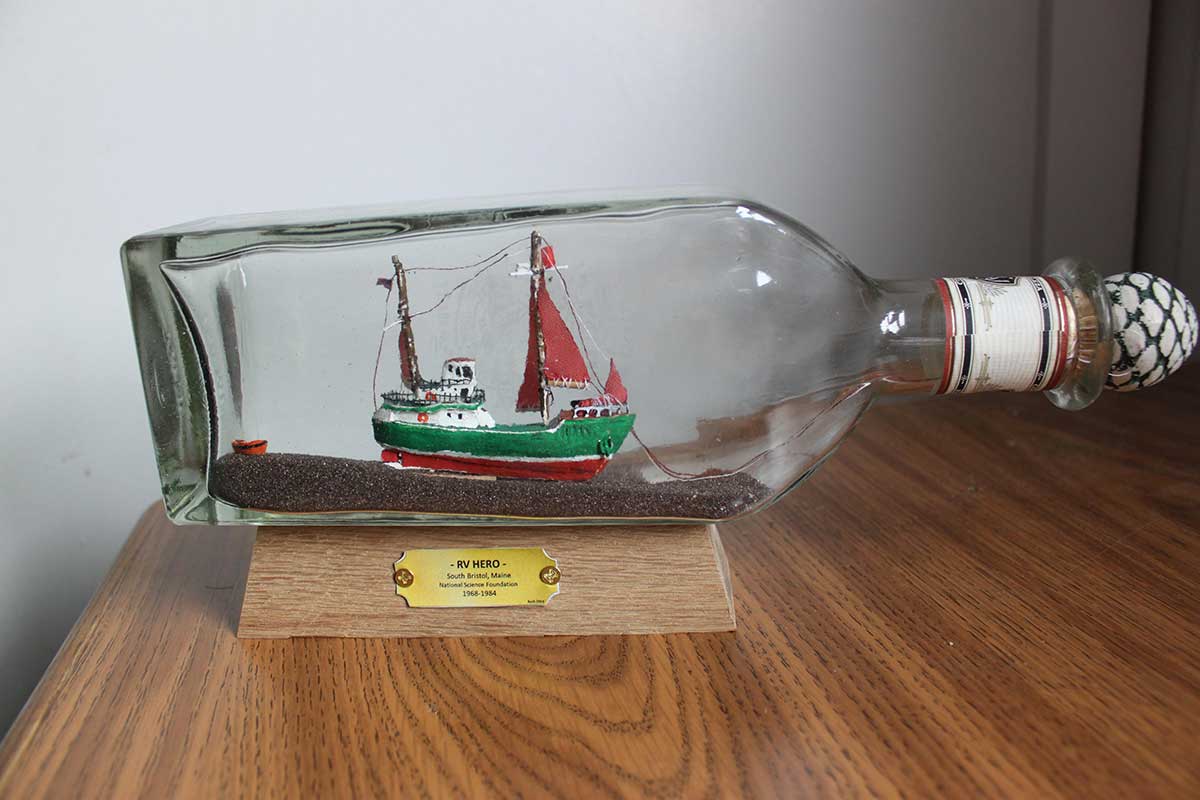
Time for me to go watch ships coming and going – galactic ships, satellites- that is. It is another calm, clear night and a half-moon will guide my way across the snowy route to my bivy. The same lunar brilliance last night did not diminish the shine of a star-filled sky across which many satellites sailed coming and going.

In closing, Team UAB in A’s to go back north aboard the Gould is rapidly approaching. This website will once again go dormant so now is the time to shoot us any topic you would like us to address in the final entries.